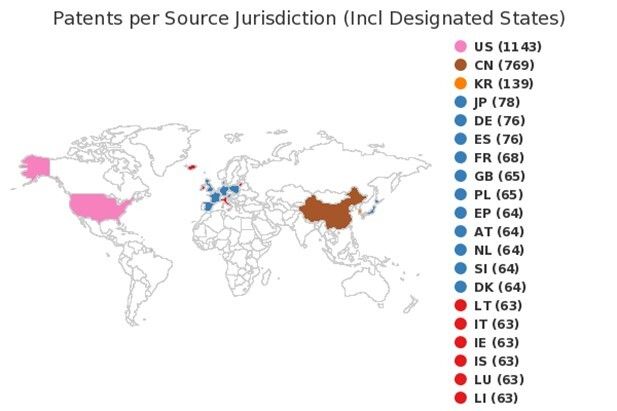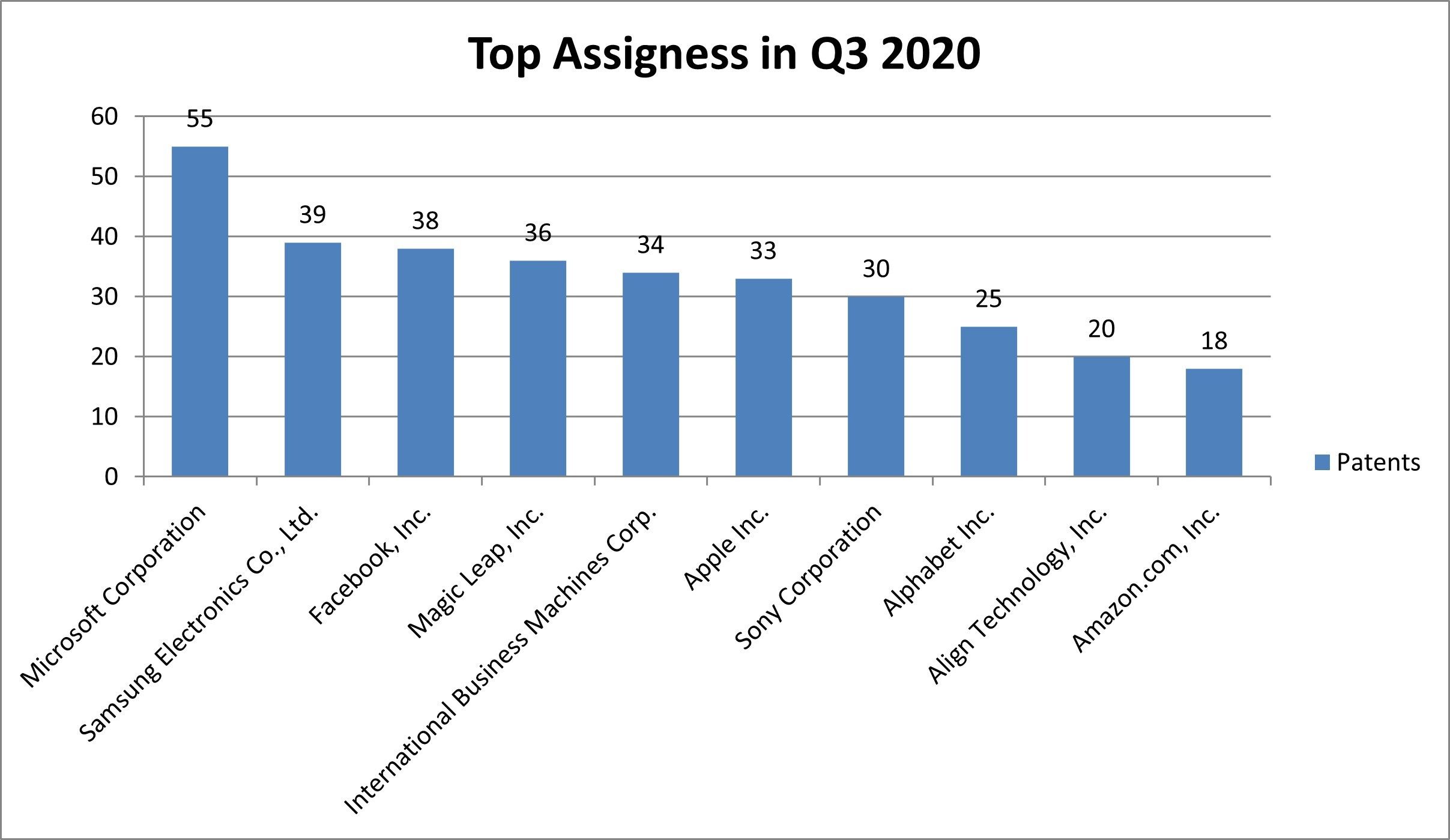As the third quarter of 2020 is behind us, we look back at the worldwide data tracking issuance of Augmented Reality/Virtual Reality patents. As a brief overview, Augmented Reality/Virtual Reality ("AR/VR") refers generally to a class of technologies that merge a view of a real-world environment with virtual objects and information or provide an entirely virtual environment as a user experience. AR/VR technologies are drawing renewed attention due in part to availability of cheaper and powerful mobile computing devices, faster and ubiquitous communication networks, plus the increased need for means of remote communication and collaboration in this work from home era. No longer are AR and VR restricted to entertainment and science fiction; they have now expanded into online shopping, workplace training and collaboration, healthcare delivery, and the real estate market, just to name a few. In this series, we track the growth in AR/VR patents worldwide that we expect will accompany the rapid innovation in this technology space. We highlight trends in patenting AR/VR technologies—who is obtaining AR/VR patent protection, and where. We track the various technology centers at the United States Patent and Trademark Office that handle AR/VR applications. And, from time to time, we shine the spotlight on interesting new AR/VR patents.
In the third quarter of 2020, almost 2300 patents issued around the world related to AR/VR technologies, a large decline from the 4000 that issued in the second quarter of 2020. The United States and China remain as the highest volume offices, with the USPTO issuing over 1100 patents (143 less than Q2) and the Chinese patent office issuing about 150 less patents than the previous quarter. Overall, most offices around the world issued less AR/VR patents, perhaps attributable to shutdowns or declines in applications filed related to the ongoing pandemic. However, after issuing zero AR/VR patents in the second quarter, the Japanese Patent Office issued 78 in the third quarter of 2020.

FIG. 1. Top jurisdictions for AR/VR patenting in Q3 2020
Microsoft remained the top assignee spot for the third quarter in a row and added 55 new AR/VR patents to its collection on top of the 58 in Q2 and 63 in Q1. Samsung surged forward for silver on the podium, procuring 39 additional AR/VR related patents with Facebook's 38 new patents right behind. Finally, after just missing the top 10 in Q1 and the falling out of the top 20 in Q2, Amazon sneaks into the top 10 for the first time in 2020.

FIG. 2. Top 10 assignees by volume of AR/VR patents issued in Q3 2020
This quarter, we examine another technology center at the USPTO to which many AR/VR application assigned. Tech Center 2800 handles applications directed to semiconductors, electrical and optical systems, and components thereof. As of the end of the third quarter of 2020, Tech Center has an average allowance rate of 82%. Prosecution in Tech Center 2800 is fairly smooth compared to other Tech Centers. For allowed applications, 80% had previously faced rejections based on prior art under 35 U.S.C. §§ 102 or 103. Moreover, only about 20% of patents issuing from Tech center 2800 have done so after filing for and Request for Continued Examination, with only one-fifth of those requiring two or more Requests for Continued Examination. Rejections under 35 U.S.C. § 101 are infrequent, with less than 5% of all applications facing such rejections. The smooth sailing continues as average pendency for patents issuing from Tech Center 2800 is 2 years, 4 months, and 5 days from filing to issuance. Lastly, applicants have had success appealing a Final Office Action to the Patent Trial and Appeal Board. More than 85% of the time outcome of an appeal was in the applicant's favor.
Design patent protection is available in the U.S. and Canada to protect the ornamental design of an object. (Europe and other jurisdictions operate on a registration system, rather than an examination system.) Companies and inventors may choose to protect hardware or graphical user interface elements using design patents. In the third quarter of 2020, a modicum of companies secured design patent protection for their products. Magic Leap again gathered more design patents than any other company. Samsung and Acer Inc. round out the top 3, each collecting 2 additional design patents related to AR/VR technologies.
While the statistics show an overall drop in total volume worldwide, the numbers can hint at which companies are prioritizing AR/VR (or at least not abandoning it) amid the international shakeup in the wake of the pandemic. Some may see even greater value in protecting their inventions as companies, educators, and families seek for solutions to collaborate, work, learn, teach, and stay connected from the safety of their own homes.
Patent Prosecution Statistics Methodology
Our analysis includes a search of all patents granted around the world in the third quarter of 2020, from July 1 to September 30, for keywords in the title, abstract, or claims related to AR/VR technologies. We then review the data to determine which offices are issuing relevant patents and which companies are focusing on protecting their innovations in the different parts of the world. For design patents, the same search was run however, we note that the search was limited to the United States and Canada as design protection differs worldwide.
The content of this article is intended to provide a general guide to the subject matter. Specialist advice should be sought about your specific circumstances.


